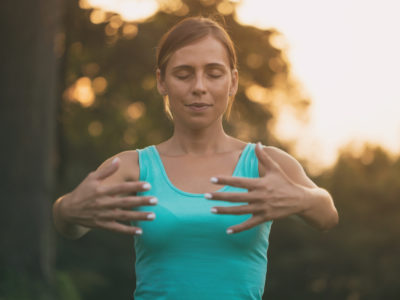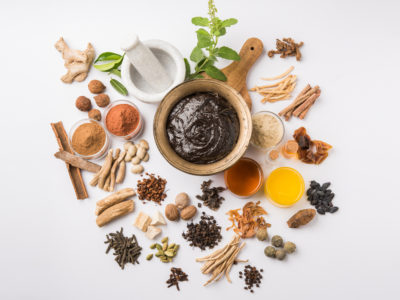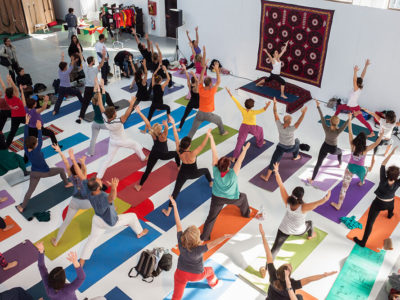Table of Contents[Hide][Show]
4 Benefits of Doing Martial Arts+−
- 1. They Can Improve Your Focus
- 2. They Can Positively Impact Body Composition
- 3. Martial Arts Can Help the Elderly
- 4. Martial Arts Can Be Good for the Mind
- Take a Breather With This Quick Relaxation Exercise
- Final Thoughts
- Ride A Bike! Why Cycling Is Great Exercise and Good Fun
- Best 5 Ayurvedic Herbs For Acne That Really Work
- Is Modern Yoga Really What the Ancients Were Intending?
What are the different types of martial arts and how will they benefit you? This article will tell you why you should consider learning martial arts!
15 Types of Martial Arts That Strengthen Your Body and Boost Your Brainpower
For many folks, martial arts is an integral part of life. Students young and old choose to practice as a means of sport, leisure, defense, and/or a health regimen for physical, mental, and emotional wellbeing.
The benefits and teachings of martial arts can be applied across many aspects of life.
To learn more and find the specific martial art that aligns with your health goals, see our list below.
1. Karate
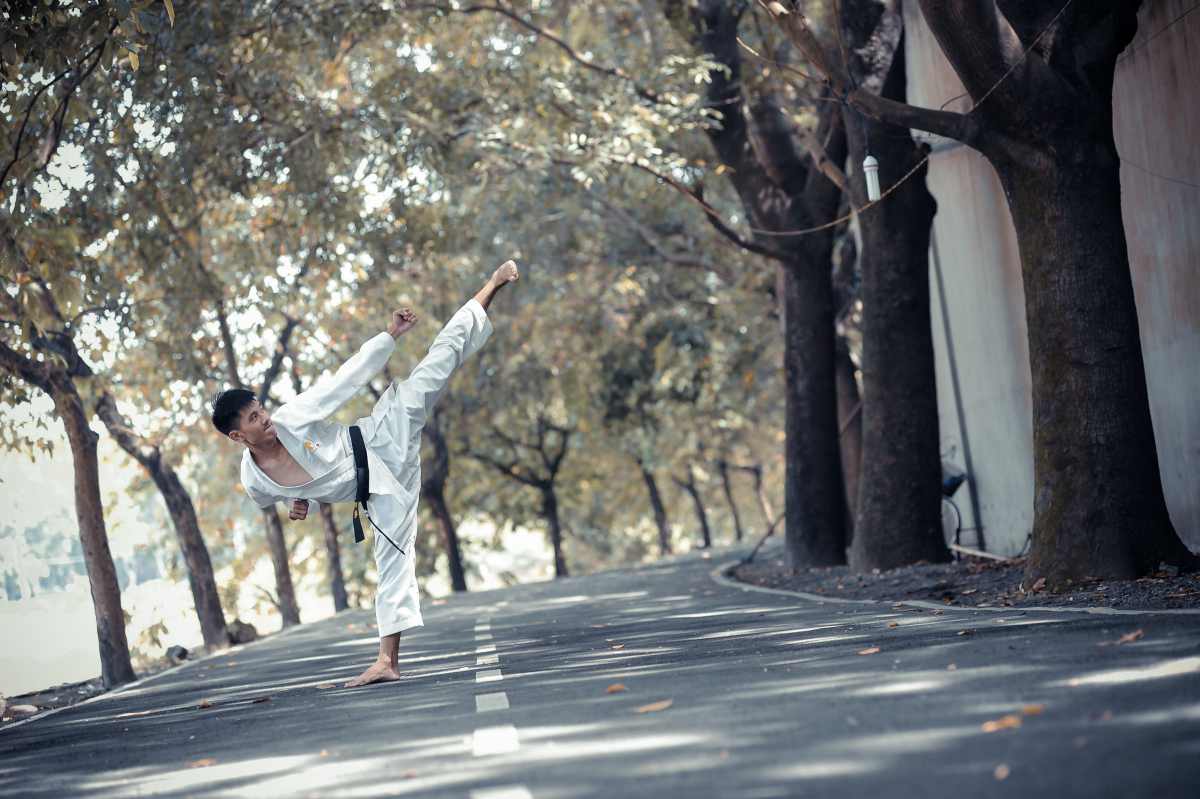
One of the well-celebrated types of martial arts is karate. It originated in Okinawa and eventually spread to the rest of Japan during the 1920s.
It is both a combat sport and a form of self-defense. Karate encourages the use of the body, specifically the hands, feet, and knees, to fight an opponent or defend oneself. Hand strikes (both open and closed fist), kicking, kneeing, and elbow strikes are all techniques used in karate.
In fact, its Japanese translation is “empty hand,” although the original term is Chinese. This is because the art began during the days of the Ryukyu Kingdom under China.
There are many different styles of karate. These include Goju-Ryu, Kyokushin, and Shotokan. These types of martial arts focus on kata, which are more traditional forms and movements in karate.
2. Kung Fu
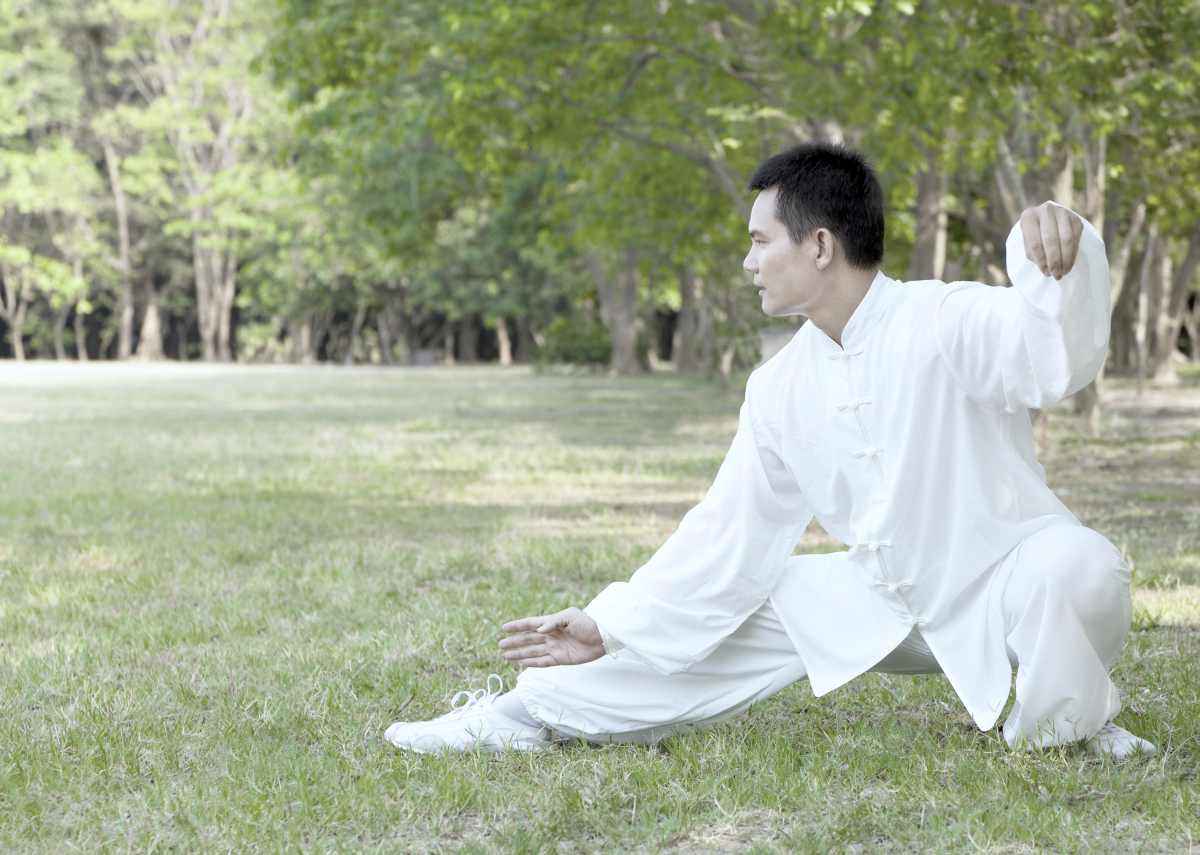
Kung fu (or gongfu in Hanyu Pinyin) is actually the generic term for all types of Chinese martial arts. But, the purpose of kung fu is quite unique.
One of the primary principles of kung fu is to build a better life. The Chinese believe it extends their lifespan and teaches patience, hard work, and discipline… This may explain why you can trace its beginnings to a Buddhist monastery.
Kung fu combines both soft and hard techniques such as kicks, punches, joint manipulation, and pressure point attacks.
Like karate, there are multiple styles of kung fu. One of the most well known is Shaolin. Shaolin kung fu was developed by monks at the Shaolin Temple in China. It uses the hard and soft fist techniques. Hard fist emphasizes speed and rhythm while soft fist emphasizes slow, flowing movements.
Related
3. Wing Chun
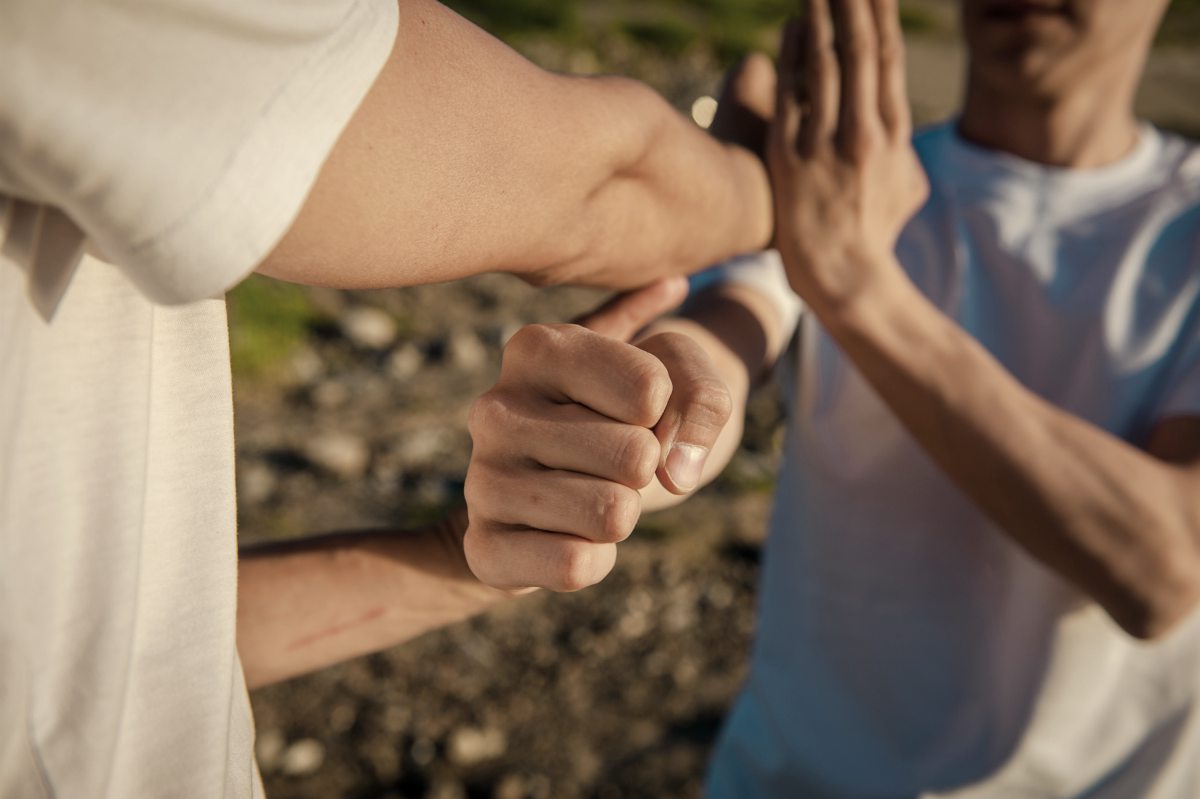
Wing Chun, which is excellent for close-quarter combat, is a highly specialized type of Chinese martial arts. It originated in China, so it’s a form of kung fu.
Later, it spread to Hong Kong. Grandmaster Ip Man then refined the styles and techniques.
Wing Chun emphasizes quick movements of the arms as a form of defense and offense, and agile footwork to help you advance toward your opponent. It demands quick reflexes and excellent coordination of the hands and feet.
4. Krav Maga
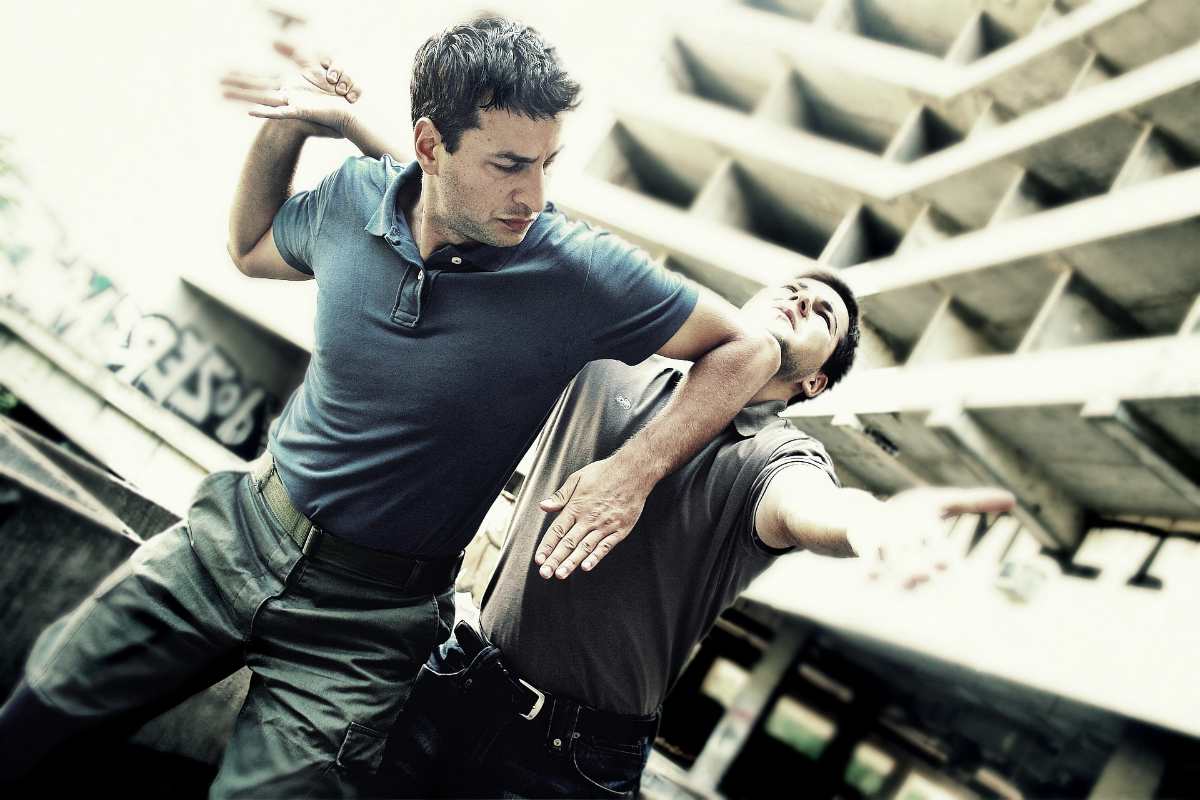
Krav Maga is a type of martial arts developed by the Israeli Defense Forces sometime in the 1940s. It is a non-combat-sport kind, and it is mainly for self-defense.
A person who practices it has one goal in mind: to neutralize the opponent. This makes it one of the deadliest forms of martial arts.
Krav is a combination of the different techniques and principles of other styles of martial arts. As an example, it also utilizes kicks and punches like those found in karate.
The biggest difference is the use of weapons. Practitioners learn how to employ everyday objects in the environment to help strike and defend themselves in a variety of situations.
5. Tai Chi
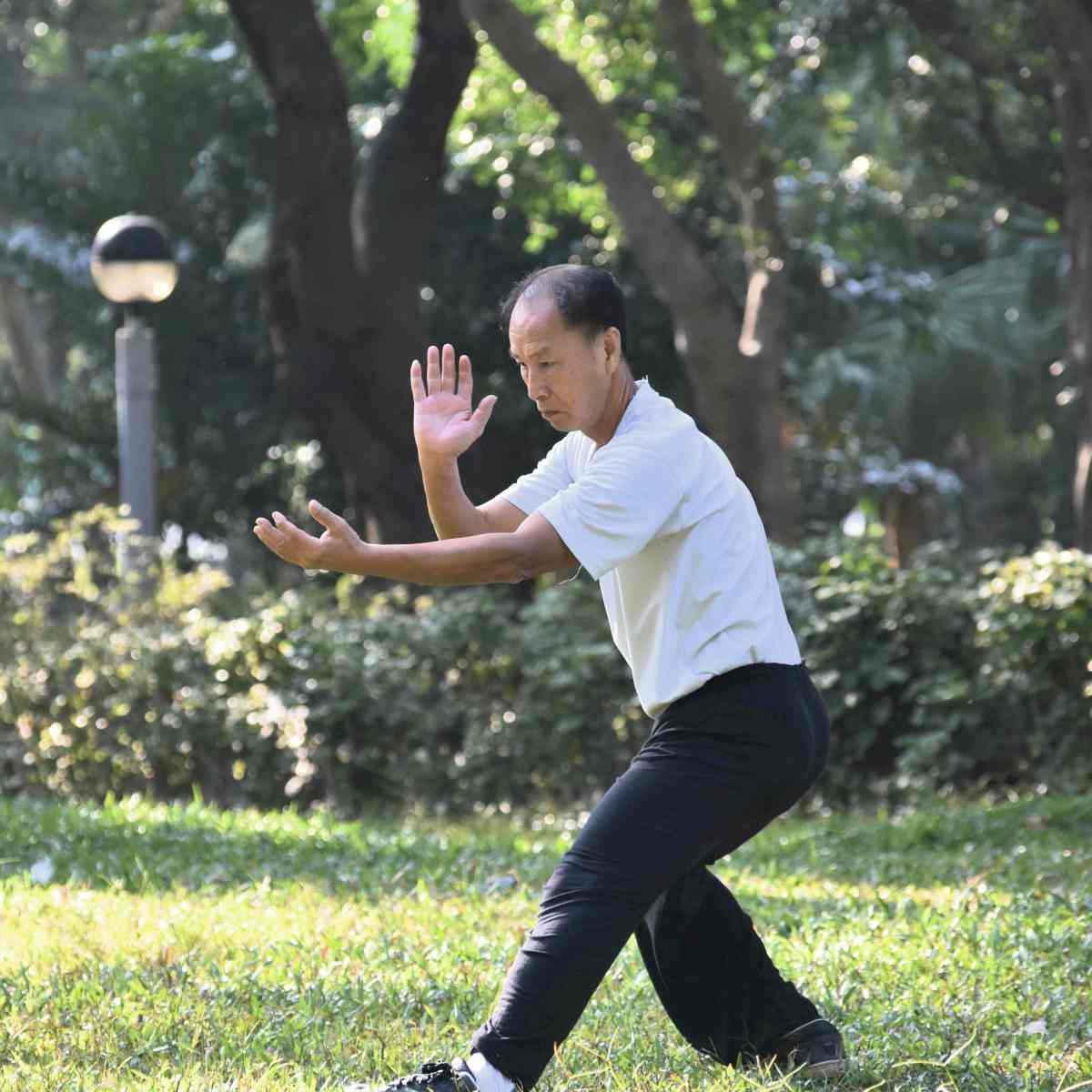
People may be surprised to know that tai chi is actually a form of kung fu or Chinese martial arts, the biggest difference being that you perform tai chi in a milder and slower manner.
Related
5 Qigong Exercises And Their Health Benefits
Improve your chi and maximize its health benefits by performing these five qigong exercises for beginners.
Some also understandably compare this to qi gong, but the two differ in one important way. While qi gong, also focuses on the cultivation of life energy, or qi, it is more about the repetition of individual stationary movements, whereas tai chi is a series of slow, gentle movements that incorporate the whole body.
With the growing popularity of tai chi around the world, other subtypes developed. One of these is seated tai chi, which can be a great exercise for seniors or those with limited mobility, as it helps improve balance and reduce fall risk.
6. Capoeira
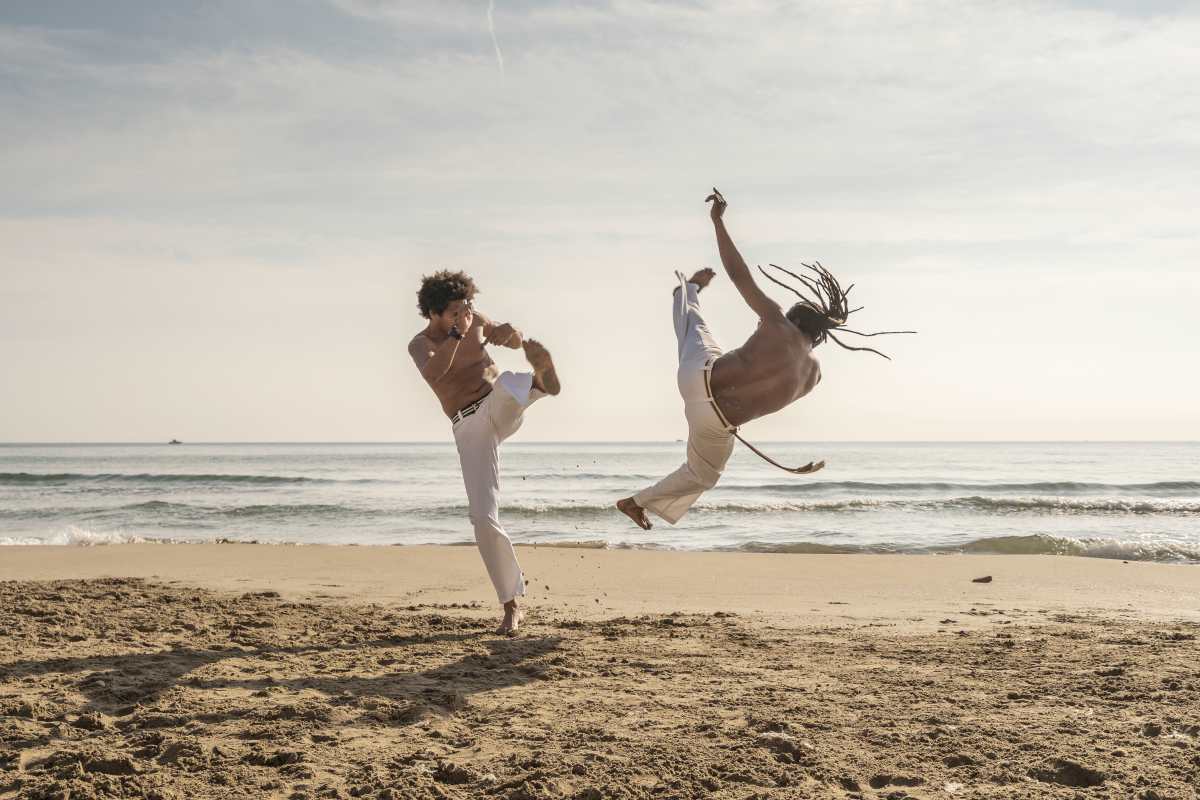
Capoeira is a style of martial arts with a deep-seated cultural history. It originated from Brazil and was initially practiced by African slaves who came from Angola.
Due to the harsh laws and strict monitoring of their lives, the slaves couldn’t celebrate their culture until they developed capoeira.
Capoeira is a type of martial art in dance form. Capoeiristas move their feet and arms, and even perform acrobatics in sync to the beating of drums.
The music and dance movements also helped to disguise the fighting elements of capoeira. Escaped slaves could use the techniques they learned in capoeira as a method of survival against armed colonial agents charged with pursuing and capturing them.
7. Muay Thai
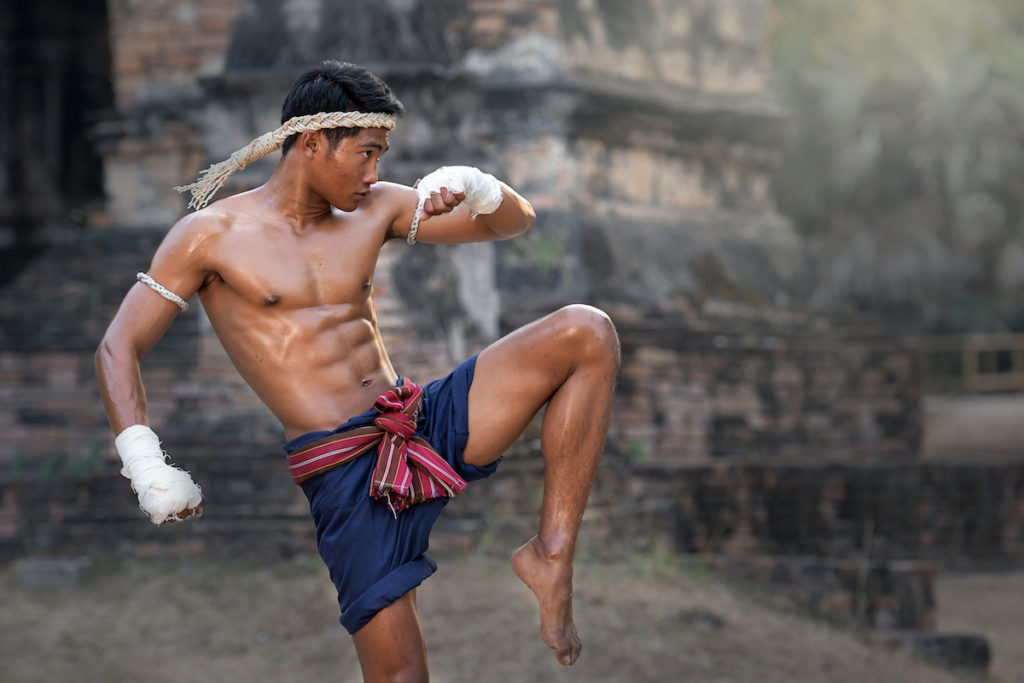
Muay Thai is a type of mixed martial arts (MMA), which means they combine two or more fighting styles. It is the combat sport of Thailand.
Muay Thai uses elements of kickboxing such as stand-up striking (i.e. hand to hand combat as opposed to ground fighting), but it also has styles of traditional boxing with its punching styles, and karate with its kicking.
8. Jiu-Jitsu
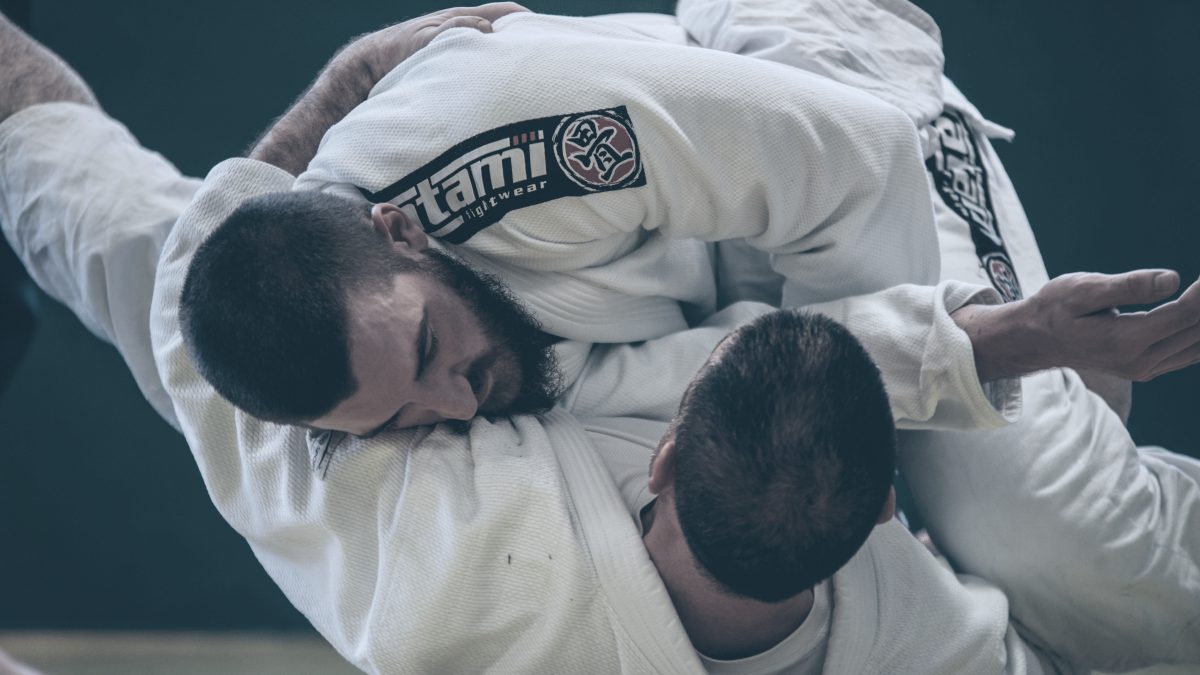
A Japanese martial art system that began during the days of the samurai, one of the key principles of Jiu-Jitsu is to use the opponent’s force against them.
Originally, it also played on numerous assumptions, including that the person you’re fighting against might be wearing full samurai gear and have a weapon.
Now that Japan has no more samurai, the practitioners are more into preserving the martial art rather than neutralizing the enemy.
One of the hallmarks of jiu-jitsu (or jujutsu, or the mistakenly spelled jujitsu) are grappling techniques, which may include chokeholds, arm locks, and pins. These make them similar to another branch called Brazilian jiu-jitsu (BJJ).
Perhaps the biggest difference between traditional jiu-jitsu and Brazilian jiu-jitsu is the technique and types of moves used. BJJ tends to be more situational, i.e. there’s more full-contact fighting techniques such as pinning and grappling to the ground, and sparring.
9. Judo
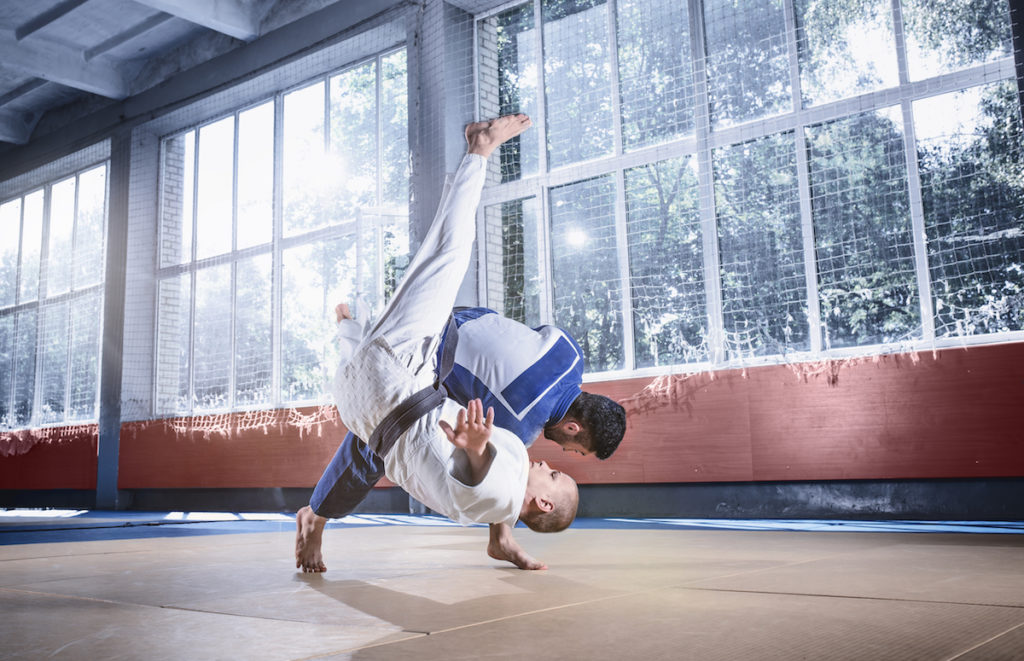
Judo is a Japanese martial art that formed out of Jiu-Jitsu. It also focuses on grappling, joint locks, and throws.
The main difference between judo and Jiu-Jitsu is that judo concentrates more on standing in order to get opponents on the ground while Jiu-Jitsu is more about ground-fighting techniques (almost like wrestling).
10. Taekwondo
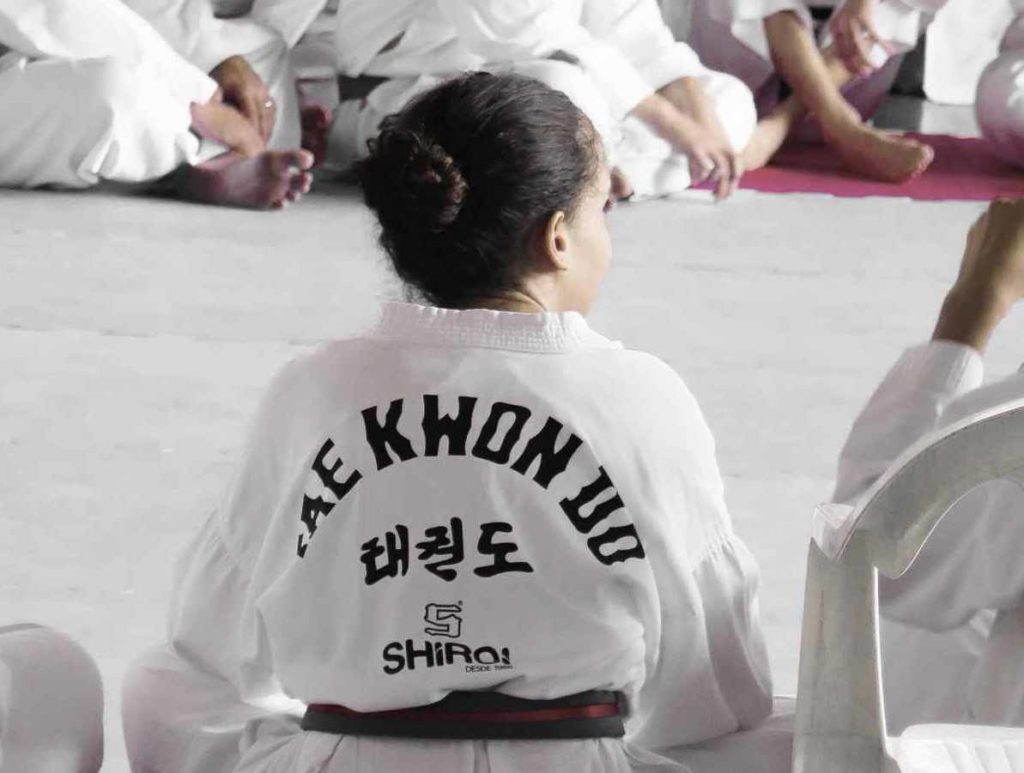
Also spelled as tae kwon do, taekwondo is one of the more modern Korean martial arts. It is a combat sport and has been an Olympic event since 1988.
This martial art uses some concepts and techniques from Chinese and Japanese martial arts. It’s more popular, however, for its kicking techniques.
Not only are these kicks fast, but they can also be head height. It also follows the principle of relax/strike, which means you need to rest your body in between kicks or strikes.
The idea is to generate as much force as you can with every strike you make. Complemented by speed, taekwondo teaches that you should be able to take down an opponent regardless of size or stature.
11. Aikido
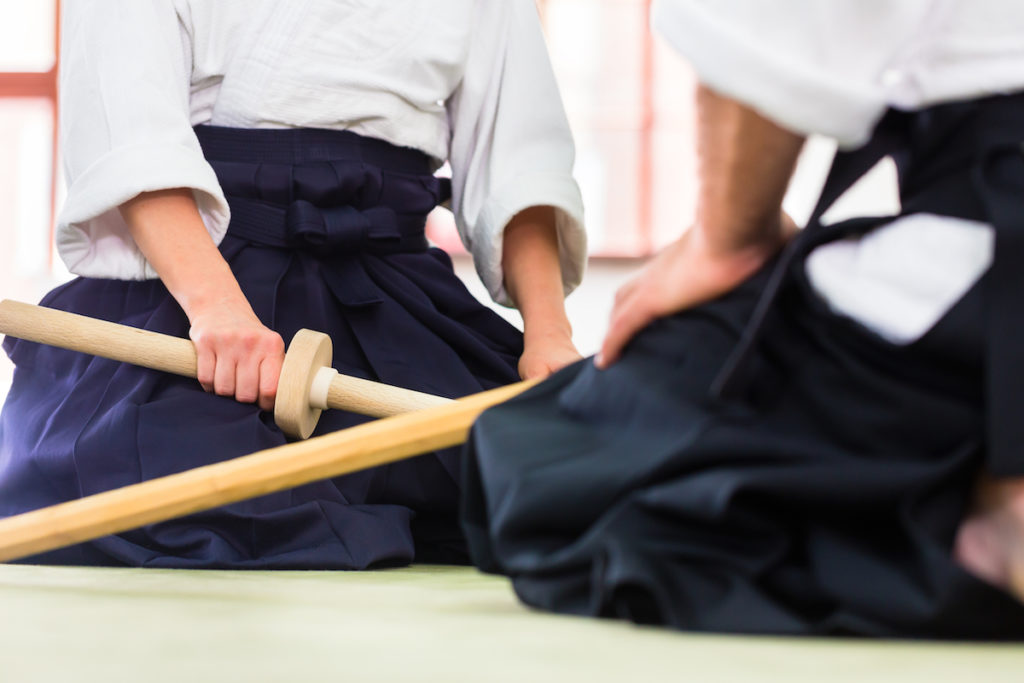
Aikido is another martial art from Japan. The focus of aikido is to redirect an attack away from you and use your attacker’s strength and momentum against them. This makes it a popular form of self-defense.
This style involves grabs, strikes, pin locks, and throws to level an opponent. It teaches specific ways to defend against armed attackers, focused on subduing rather than killing. While aikido training may include the use of weapons (bokken, jo, and tanto), it’s still from a defensive perspective in order to teach correct stance, distance, and timing, as well as using these tools as equalizers against larger opponents. A main principle of aikido is maintaining mental calm and physical control of your own body.
12. Hapkido
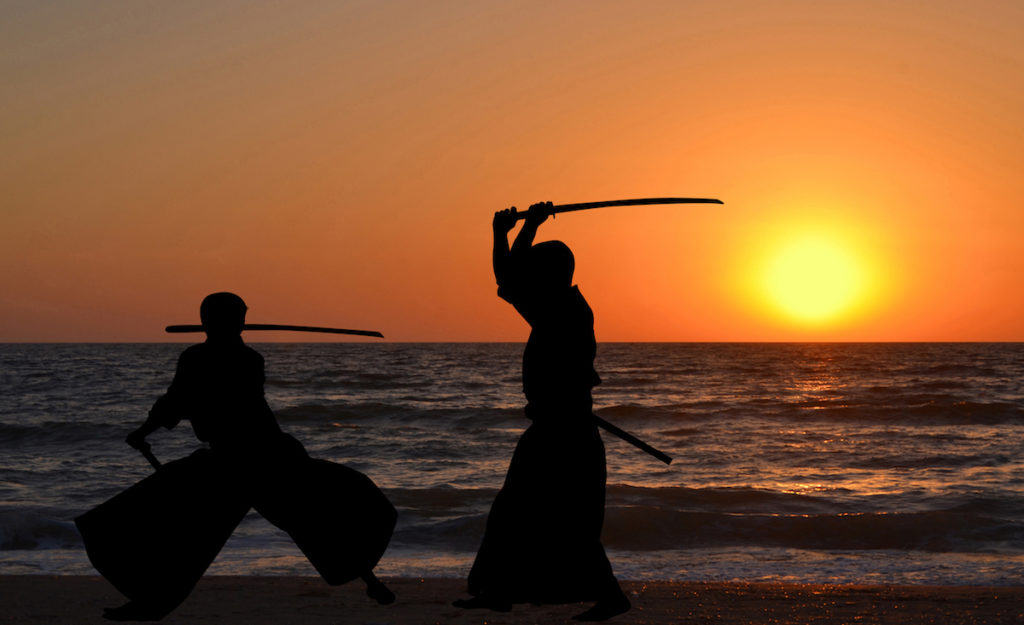
Hapkido is very similar to aikido, with a few notable differences. This martial art comes from Korea, and it teaches offensive techniques, whereas aikido mainly focuses on defense.
Hapkido teaches punches, kicks, joint locks, and throws, and also utilizes weapons training with staffs, canes, and swords. It emphasizes circular motion and non-resisting movements to control an opponent.
Kendo
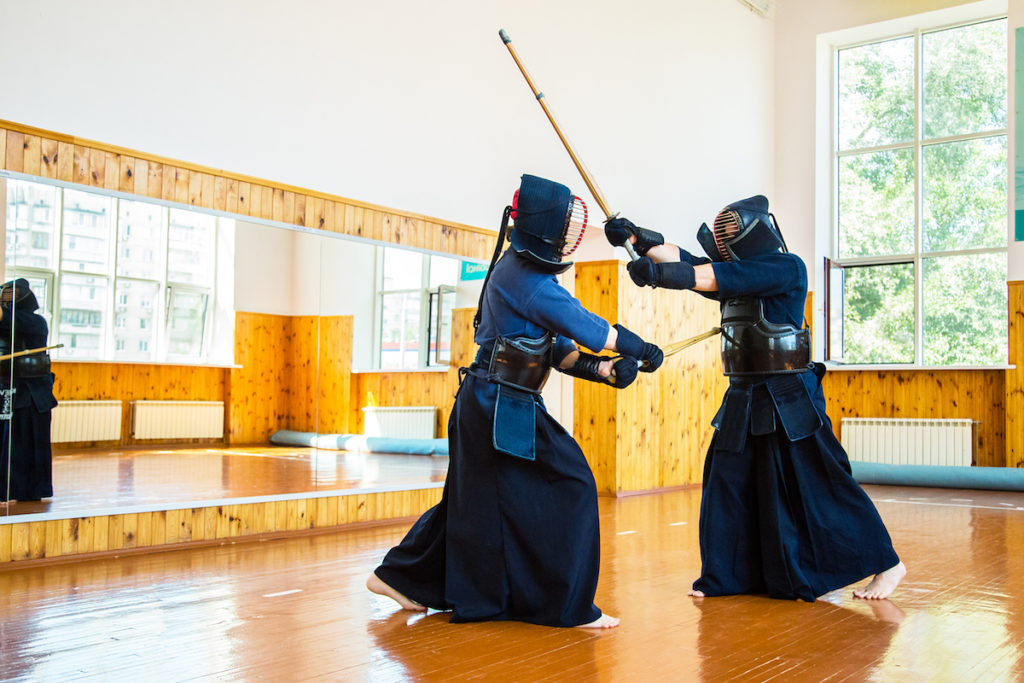
This is a Japanese, sword-based martial art. It is taught by training with wooden bamboo swords called Bokken or Shinai.
Students wear protective armor during training. Many kendo students eventually graduate to practicing Iaido, which is another martial art that involves a metal sword.
14. Jeet Kune Do
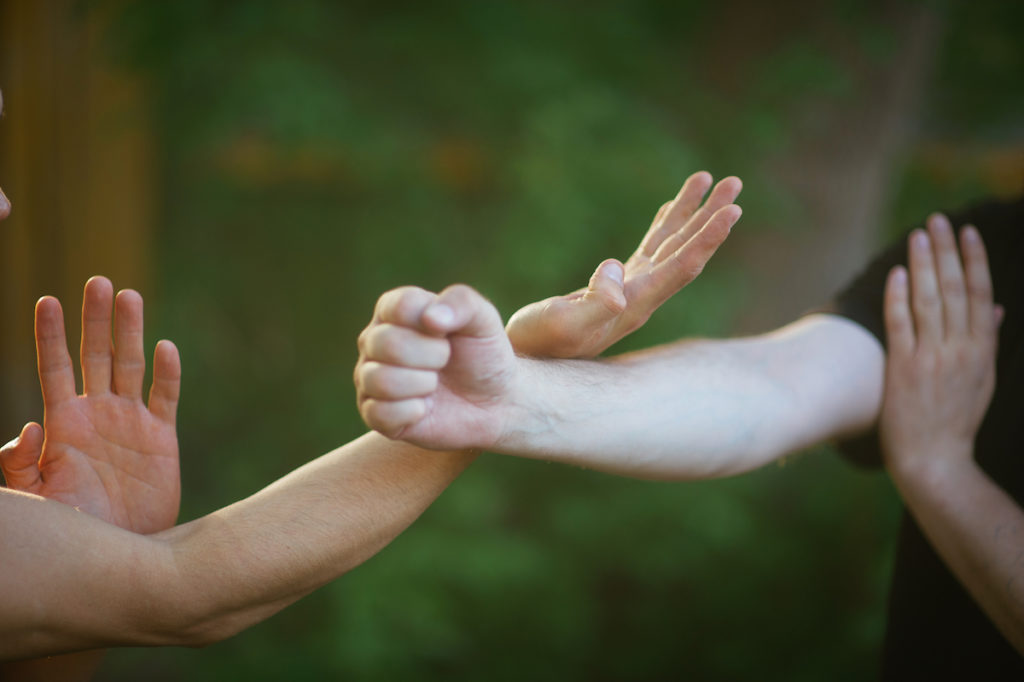
This is an American martial art that was founded by fighting film legend Bruce Lee in 1967. Jeet Kune Do means “Way of the Intercepting Fist.”
This style focuses on techniques that would be useful in real life situations so it’s another popular art for self defense. It teaches punches, kicks, grappling, and traps. This is a mixed martial art that combines elements of boxing, fencing, and kung fu.
15. Sambo
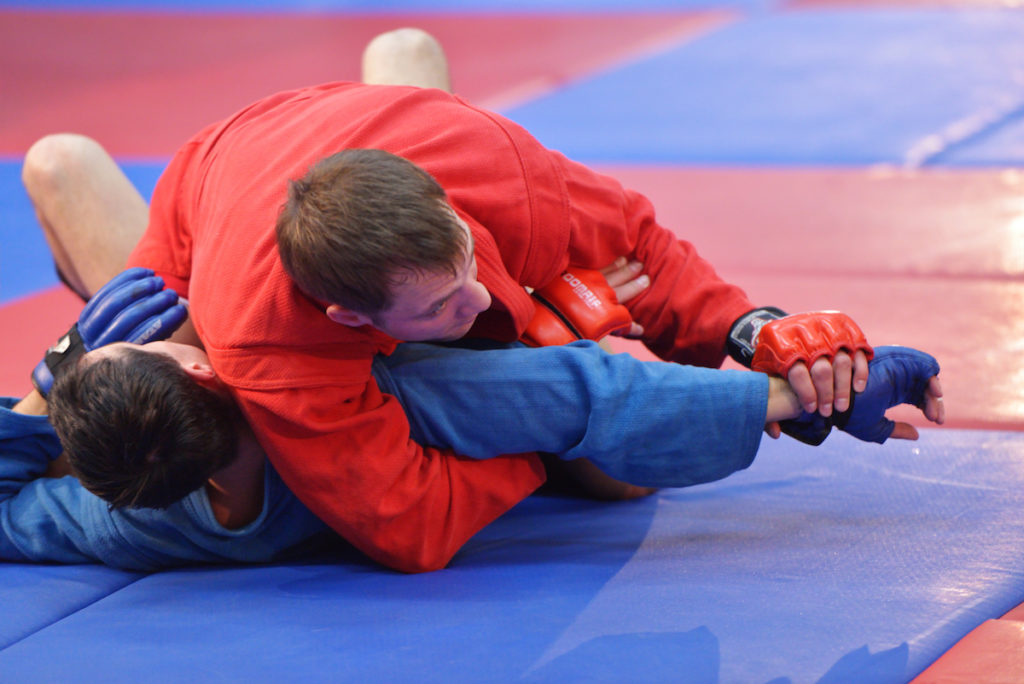
Sambo is a martial art that began in Russia. It has two styles: Combat and Sports.
Combat sambo is like MMA and involves punches, kicks, locking, and grappling. Sports sambo has more in common with judo and wrestling.
4 Benefits of Doing Martial Arts
As you can see, there are many types of martial arts, and as they spread across the world, they evolved.
If there’s one thing they all have in common though, it’s the fact that they all provide important health benefits.
1. They Can Improve Your Focus
There are many techniques to boost your focus naturally, and one of them is engaging in martial arts.
A 2018 study in Frontiers in Psychology revealed that those who practiced it may experience a heightened alert network. There’s also a positive correlation between the intensity of the alertness and the time (years) spent practicing.
2. They Can Positively Impact Body Composition
Martial arts can be a form of a full-body exercise as it requires movements from many different types of muscles. Even slow types such as tai chi require precise, fluid motions of the arms, neck, and legs.
The level of activity can also burn calories. Depending on your weight and the type of martial arts you do, a 30-minute session may burn about 300 calories.
3. Martial Arts Can Help the Elderly
Some elderly people are prone to injuries such as fractures when they fall. A 2010 research showed that martial arts could help individuals who suffer from osteoporosis, a condition where the bones become brittle.
In the study, the research indicated that martial arts fall exercises may train them how to fall safely.
4. Martial Arts Can Be Good for the Mind
There is a great deal of evidence showing that martial arts can have psychological benefits. For example, tai chi incorporates meditative techniques such as deep breathing. It can help reduce the feelings of stress and anxiety.
Related
Take a Breather With This Quick Relaxation Exercise
Tight deadlines, cranky co-workers, lack of sleep and crazy schedules can leave us stressed out with little time to unwind. While we can’t escape our chaotic, modern lives, we can do some quick, breathing exercises to help counteract some of our everyday stress. Tristan Truscott, sensei and founder of the Austin Martial Arts Academy and …
Another example is from a 2012 American research study of mixed martial arts competitors. The study showed that the sport helped these men manage their fears in ways that helped them exhibit more confidence.
Additionally, many of the types of martial arts we have mentioned involve sparring, which can be a good way to train yourself in discipline, acceptance, and trust. Note that sparring and fighting are not the same. The purpose of sparring is to make both you and your opponent better.
Finally, according to a 1999 research study, there is even a link between martial arts training and a decline in aggression.
Final Thoughts
Although you can do some of these types of martial arts alone, you may want to take a few classes. This way, you can also foster good social relationships. If you decide to do karate, jiu-jitsu, or taekwondo and you work hard enough you could even earn a black belt one day!
You May Also Like…
Editor’s Note: This post was originally published on August 9, 2019, and has been updated for quality and relevancy on March 30, 2021.

